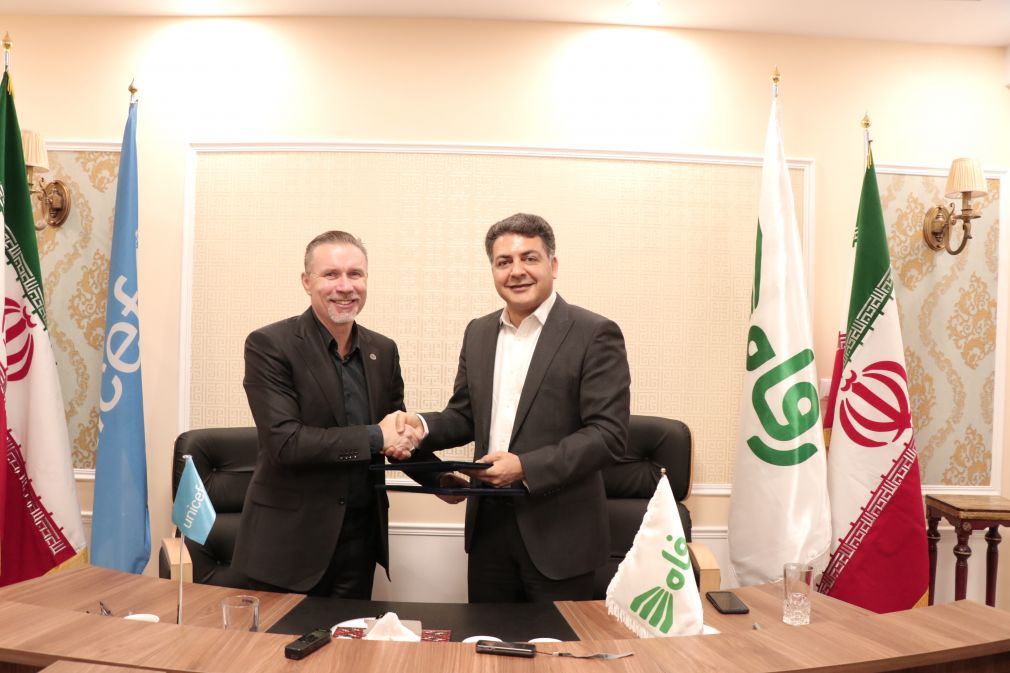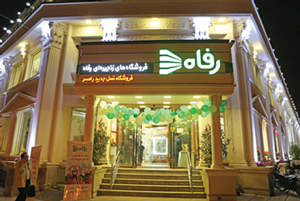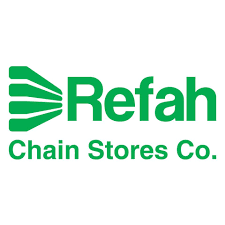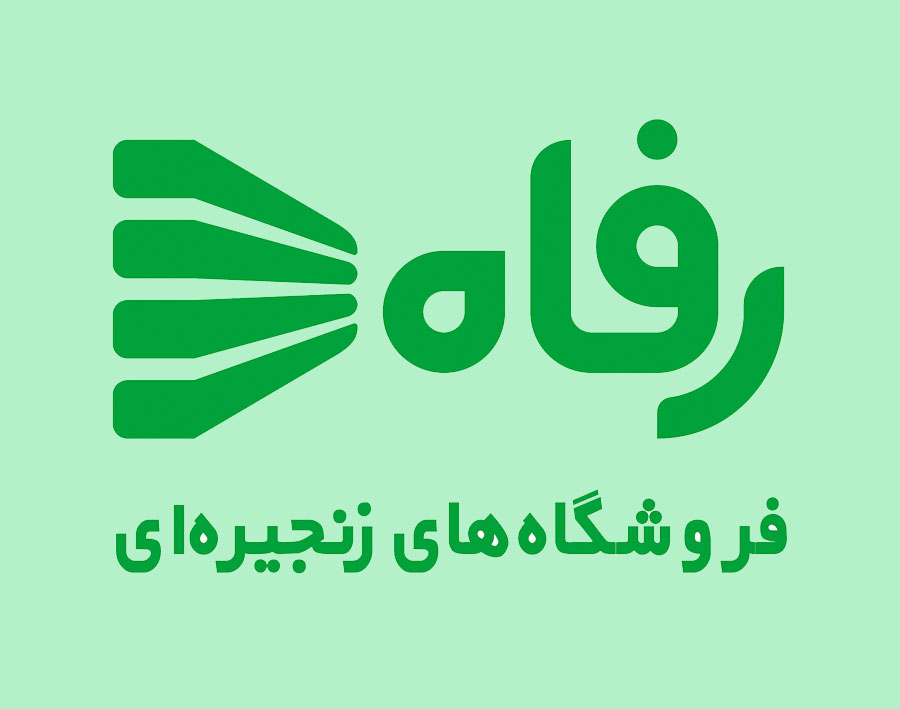Post Updated on 31st July 2023
A Case Study at Refah Chain Stores Co
Management Control System
Abstract
Management control systems (MCS) in the retail sector are more likely to assume particular characteristics as within this setting, shared administration with various types of organizations having different objectives and visions. What is at stake is the management of the network of relationships as well as the management of behaviors in the organization that is a part of this network.
The concept of MCS is not new and the exploration of the concept in the retail sector is abundant. This research aims in presenting a way for further research. A model is based upon a case study of Refah Stores. A detailed explanation of the management control process at Refah Stores is presented. The results found that the cultural barrier is not a major issue within the organization. There are many strategies to combat such a situation. Feedback and opinions are important as they will lead to a high level of cooperation amongst employees.
Table of Contents
Introduction
Background of Management Control Systems
Refah Chain Stores Co.
Literature review
Management and Control
Management Control Systems
Planning
Cultural Controls
Cybernetic Controls
Administrative Controls
Methodology
Empirical Data
Empirical Material
Management Control Systems (MCSs) at Refah Stores Chain Co
Cultural Controls
Planning Controls
Cybernetic controls
Rewards and Compensations
Analysis
Conclusion
Introduction
Background of Management Control Systems
The concept of a management control system emerged after the Industrial Revolution, which allowed organizations to expand and grow their business operations like never before. Most parts of the value chain were located within both new and bigger firms rather than being spread over at different positions within smaller firms or a single person. With the occurrence of these changes, there was a need to consider financial measurement in the form of business ratios as well as transfer pricing to be very important, and this was the point from where various forms of management control systems were initiated (Merchant & Van der Stede, 2007; Ax, Johansson & Kullvén, 2007).
Refah Chain Stores Co.
supermarket chainRefah is an Iran-based supermarket chain currently operating across the country with 160 branches. Additionally, the company also has branches in Turkey and Iraq. The retailer is engaged in the provision of a wide range of products in the lines of Fresh Produce, Food and Beverages, Electronics and Home Appliances, Cosmetics and Hygiene, Stationaries, Textiles, and Clothing. The slogan for Refah chains is ‘Better quality, lower prices”. The chain of stores is also adequately tapping the online market and customers who order online get it delivered to their doorstep. In association with Hyperstar-owned Carrefour and Shahrvand Supermarket, Refah Chain of Stores caters to the bulk demand of the Iranian retail industry.
The main objective of the study is to assess and determines the management control system at the Refah Chain of Stores. The report will explain how some management control systems are being used at different organizational levels and how every management control system is related to each other.

Literature Review
Management and Control
Management control is rendered the back end of the management process and is a critical function within an organization. Failure to implement an adequate management control system can result in huge financial losses, damage to reputation and in many cases, ultimate organizational failure as well. Though it is important; however, too much control also does not always guarantee better controls; some management control systems may utilize stifle initiative, innovation, and creativity (Albertini and Muzzi, 2016).
Management
Management is related with the process of organizing the various resources and directing all activities so as to attain organizational goals.
Objective Setting
Understating objectives is a crucial factor in designing a management control system. Objectives do not need to be quantified and may not be even financial. Most of the companies are aware of organizational objectives; however, many times employees may not even know these objectives (Chenhall, 2003).
Formulation of Strategies
Strategies tend to define as to how firms will use their resources so that objectives can be effective. Employees may often take actions that derive better results than formulated strategy, thereby creating a difference between the actual strategy and the formal strategy. Hence, formal strategic statements are not obligatory for formulating MCSs however; it can make the process easier for the management to identify the feasible options available for management control and how they can be effectively implemented (Merchant and Van Der Stede, 2007).
Management Control Systems
According to Hared and Abdullah (2013), management control systems are those rules, values, practices as well as other activities which are placed by the management so as to direct the behavior of employees (Malmi and Brown, 2008). According to Merchant and Van der Stede (2007), MCS can either be a single system or a set of control systems. MCS is commonly referred to as an MCS package, as is that different types of MCSs have been applied at different times and for differing purposes (Malmi and Brown, 2008).
The MCS package can be categorized into five distinct groups, namely planning, cultural controls, cybernetics controls, administrative controls and rewards, and compensation.
Planning
Planning refers to the way in which goals are set for the company as well as for the various functions of the company. Here, planning is the major carrier to promote goal similarity amongst the organization and employees. Planning can further be categorized into two broader aspects – long-range planning and action planning. Long-range planning has a strategic focus, whereas action planning has a tactical focus and is associated with planning for actions and goals, which is to incur within 12 months.
Cultural Controls
Cultural control is important to control employee behavior in three distinct ways. The first one is when the company deliberately searches and hires those employees who have certain desired values. These values are linked with the organizational strategy. The second is somewhat the opposite of the first category; in this aspect, the company attempts to change employees’ values. These are also referred to as symbol-based controls, which are visually illustrated (Malmi and Brown, 2008). The third category explains to the employees what is expected from them, what values they should possess, and whether the employees tend to agree with them (Merchant and Van der Stede, 2007).
Cybernetic Controls
This is basically the study of controlling as well as of the system (Malmi and Brown, 2008). In the context of an organization, there is a process which involves a feedback loop and is presented by using standards measuring the performance of the systematic comparison of the performance with the standards, providing feedback about the information related to undesired variances within the system as well as altering the comportment of the system.
Administrative Controls
According to Davila, Foster, and Li (2009), administrative controls monitor employee behavior throughout the organization and hold employees accountable for their behavior by specifying how tasks need to be performed. Administrative controls are further divided into the organizational structure, which serves as a tool for management control, policies, and procedures which tends to organize the behavior and processes of the firm and governance structure which involves the formal line of authority and accountability.

Methodology
The aim of this report is to determine the management control process at Refah Chain Stores Co. and how it is implemented within the object organization.
In such cases, qualitative methods are considered to be very helpful to create or develop reasonable structures so to provide an alternate route for the development of theories. These approaches can be used to refine existing literature and theories (Thompson, Gamble and Strickland, 2004).
According to Yin (2008), in-depth analysis helps in examining a phenomenon that includes aspects that are beyond formal instructions and rules therefore, in this report, a case study analysis will be undertaken. The different components of the model will be explained and applied in the analyzed case.
The case study is of Refah Chain Stores Co. the sources from which data is obtained are structured evaluation of events, semi-structured interviews, collection of relevant documents and content analysis.
Empirical Data
History and Facts of Refah Store Chain
Refah Chain Stores Co. was established 28 years ago in the year 1995 in Iran with the direct support of that time president Ali Akbar Hashemi Rafsanjani. The supermarket chain provides a wide range of products, including Fresh Produce, Food and Beverages, Electronics and Home Appliances, Cosmetics and Hygiene, Stationaries, Textile, and Clothing. The store operates with 160 branches across Iran and operations in Iraq, UAE, and Turkey.
The chain of stores is mainly owned by major government banks where Bank Melli owes 19.8% of shares, Bank Saderat owes 14.2% of shares, Bank Mellat owes 10.1% of shares, and Bank Tejarat owes 9.5% of shares and Bank Sepah with9.4% of shares. The remaining shares are owned by individual peoples.
Refah Stores operates three different types of stores among its outlets; about 160 are branches that are located in key provinces. Amongst these, about 45 stores are situated in Karaj and Tehran, which clearly indicates the company’s concentration within these cities. The second type of outlet is those which are not completely owned by Refah Chain and are operating in affiliation with other firms and such types of stores are three in total. The third type of outlet is basically retailers of whose products are delivered by Refah and the debit card of whom is accepted. There are 723 outlets of this form spread throughout the country.

Empirical Material
The empirical material for this work was obtained through interviews. Managers at different levels of the organizational structure were interviewed and all interviews were conducted on the phone
The Vision and Mission of Refah Stores
Vision and mission are the core of any model. Vision can be referred to as an aspirational explanation as to what the company is willing to attain in the longer term. It serves as a guide for selecting current as well as future course of action. Alongside this, a mission is a declaration of the core purpose and focus of the organization which tends to remain the same over time.
According to Ferreira and Otley (2009), vision and mission are considered a management control process of an organization since it delivers information on how organizational values and purposes are established and communicated as a way to influence the behavior of all participants in the organization.
The vision of Refah Stores is to emerge as a multi-format retailer that has the capacity to deliver the best in class margins, sales and profitably operates within strategic locations inside Iran and in other countries of operation.
The mission statement of Refah Stores is to remain committed to the promise of delivering a great experience. It should be through high-quality and distinct products at reasonable prices. It is served by dynamic and dedicated employees who are guided by the core values laid down by the founders of the Stores.
Organizational Structure
Organizational structure is a way to integrate management control which operates by functional specialization and organizational design has an impact over various controls that can be applied (Malmi & Brown, 2008). According to Albahari et al. (2011), inappropriate organizational infrastructure can result in a configuration gap which can eventually negatively impact the control system within organizations. Refah Stores is undergoing a reorganizing procedure to create an organizational structure supporting coordination and faster decision. Such a structure aims to help coordinate, visualize opportunities, and determine weaker areas. This structure will benefit Refah in the transfer of information and communication between the warehouse and the retail stores.
Management Control Systems (MCSs) at Refah Stores Chain Co
Cultural Controls
Employees in Refah Store Chain are selected very carefully and in accordance with the requirement of the position. Like any other supermarket, there are a whole lot of people working together and from diverse backgrounds as well as specializations. As a result, there is a fusion of various cultures which can result in the arising of complications among the employees. Culture plays a very important role in the supermarket industry as they need to continually evolve to become innovative and deal with new processes and ideas (Albahari et al. 2011). To foster this process, relationships should be carried out smoothly and easily between people, strengthening all informal relations at every level. Routines, bureaucracy and restricted formal relationships are discarded and managers are required to invest all their efforts to strengthen trust between people working inside the supermarkets.
The store has provided uniforms to its employees. All employees have been provided with the same uniform without any command except that of the butchery section.
When a new employee is hired, he/she is trained for on-floor dealings for almost a week. This training involves understanding the working procedure of the store as well as educating about selling and customer relations. Additional training will be provided over the basis of function and position.
Planning Controls
Usually, two planning control systems are used in Refah Stores, which include business and budget plans. Business plans are made for 5 years whereas; budgets are developed for one year. The process of developing a business plan is simultaneous with budgeting. The business plan is developed for all superstores of the chain and is then divided into regional business plans for every store by the managers. The process is that the top management guides lower-level management and determines what areas need to be focused more. However, the store management and team have the right to apply whichever guideline is applicable and can implement actions that they consider to be more important for the development of the store. For example, if the need is to reduce the waiting time at counters, adequate measures need to be undertaken to reduce waiting time and increase customer satisfaction.
Personnel planning are another important aspect of management control (Chan & Pretorius, 2007). Planning about the budget involves planning about store staff as the cost of hiring and recruiting staff is considerable and needs to be considered in the process of budgeting. Every store has a staff planner that aims to plan staff that matches the customers’ requirements to working hours. To conduct this effectively, a cross-functional staff system is applied in which the staff members can work in different areas of the store, which will be in accordance with the laid staff plan.
Cybernetic Controls
Cybernetic controls at Refah Stores are action-planning and long-range planning. Budgets are used at the time of investments and most of the time KPI’s are used to measure the daily, weekly, monthly, and yearly performance of stores. KPI’s comprises of both financial and non-financial factors such as cost and budget is financial factors whereas, safety and quality are rendered to be non-financial factors of KPIs.
The budget is initiated by the top management within stores, where forecasts of cost and sales are set at a percentage of sales. Additionally, different scenarios are also considered in the budgeting process, which can be used later in case the actual sales and cost incurred are higher or lower than what was forecasted.
Apart from productivity and sales measures, Refah Stores also integrates other non-financial measurements such as the market, the customer, and an employee survey. The surveys are being standardized on a yearly basis through external companies and the data obtained is compared with other stores and with the results of the previous year’s survey. In this way, the store recognizes improvements or any deterioration within these aspects.
Rewards and Compensations
Refah stores use one reward system in their stores across the country, making it easier and fairer to administer and evaluate. A premium salary system is applied at the store level where equal amounts are paid to workers – on- and off – based on their performance. Individual monetary awards are also provided to staff members who have performed extraordinarily and effectively contributed towards attaining store goals and objectives.
Alongside the usual payroll system, Refah Stores also works through feedback and activities as a means to show appreciation. The basic idea behind this process is to motivate employees to make self-made plans for what they are willing to achieve at Refah Sores. The store also makes efforts to use internal recruitment so as to encourage and satisfy employees and ensure that the organizational culture is intact within the store.
Analysis
The culture at Refah Stores is strongly influenced by the labor culture in Iran, which comprises of entrepreneurship, cost-effectiveness, and equality. Additionally, the culture is also influenced by increased focus on sales and target attainment.
The management control system focuses on directing the behavior of employees in the desired manner through different controls within a management control package (Merchant & Van der Stede, 2007). In the case of Refah Stores, efforts are being invested in developing a strong corporate culture. Where employees are hired according to the position’s requirements. They are further trained and polished to serve as the company’s productive assets.
Administrative controls involve organizational structure, policies and procedures and governance structure (Malmi and Brown, 2008). Every store of Refah operates with a single organizational and governance structure and is designed to foster communication, support, and control through various means. Guidelines related to company targets and communication are spread over different levels of the organizational structure like that of regular staff meetings.
As Malmi and Brown (2008) indicate, planning is divided into action planning and long-term planning at Refah Stores. Long-term planning involves developing a business plan and segregating it into the requirements of individual stores whereas, budgeting is prepared from the top level and guidelines are provided to middle-level and low-level managers. The forecast is based upon a particular percentage of sales and every store needs to adapt this even though they can impact numbers by providing their own forecast.
Cybernetic controls include financial and non-financial measurements in which budgeting refers to the financial measurement and quality and security refer to nonfinancial measurements. The cost of personnel is the largest cost category of Refah Stores and is measured through the ratio of sales. Being a larger retailer in the Iranian market implies a different form of inventory management for controlling their stock level. If it is required, products are offered at reduced rates so as to get them sold out. This implies that the store can maintain a low level of inventory.
Both financial and non-financial measurement systems are incorporated, which forms a hybrid management system. According to Nørreklit (2003), the method of balanced scorecards allows managers to consider the organization from four distinct perspectives: internal perspective, customer perspective, financial perspective and learning and innovation perspectives. At Refah stores, internal, financial and customer perspectives are highlighted. The innovation perspective is not measured even though; a lot of work is initiated in this aspect.
Conclusion
Refah Stores has a strong corporate culture which is apparent in its working conditions. The corporate culture is based on equality and cost-consciousness. The management control process is set as a framework for directing employee behavior as well as demonstrating the direction of the store operations.
The measurement system at Refah Stores is detailed, allowing the store to understand how the store performs and as such take action accordingly. The measurement systems are used to control resources effectively.
The planning process at Refah is appropriate and involves sales staff within the planning process. Staff members are motivated to present their feedback and ideas so that the store can benefit from them.
The management control process involves various management controlling some aspects may be complementary and some may overlap. The results may overlap with the cultural control process. It appears to be very reasonable to use both forms of control which will increase the level of motivation within the stores.
Need Help or Advice in Academic Writing
See Samples
https://independent.academia.edu/shamsulIslam8
Need Help or Advice in Content Writing Management:
Would you like more advice? Do you have good practices to share? Express yourself in the comments. Also, if you want help in writing content to drive more traffic and boost conversions, please get in touch through Contact our team.
Do you want help writing quality content, driving traffic to your website, and boosting conversions? You can contact me through my Freelancer.com profile also. I always prefer to work through my Freelancer.com profile for smooth functioning. Here you pay safely and securely.
Read More:
Are You a Good Leader – 4 Steps to Bring Teammates into Your Vision
Ways to Protect Your Privacy on Social Media Channels
References
- Albertini, S., & Muzzi, C. (2016). Institutional entrepreneurship and organizational innovation: The start-up of a divergent new venture at the periphery of a mature field. The International Journal of Entrepreneurship and Innovation, 17(2), 110–119. https://doi.org/10.1177/1465750316648578
- Catasu´ s, B. and Gro¨jer, J.-E. (2003), “Indicators: on visualizing, classifying and dramatizing”, Journal of Intellectual Capital, Vol. 7 No. 2, pp. 187-203.
- Chenhall, R. (2003). Management control systems design within its organizational context : Findings from contingency-based research and directions for the future. Accounting, Organizations and Society 28, 28, 127–168
- Davila, A., Foster, G., & Li, M. (2009). Reasons for management control systems adoption: Insights from product development systems choice by early-stage entrepreneurial companies. Accounting, Organizations and Society, 34(3–4), 322–347. https://doi.org/10.1016/j.aos.2008.08.002
- Hared, B., & Abdullah, Z. (2013). Management Control Systems : A review of literature and a theoretical framework for future researches. European Journal of Business and Management, 5(26), 1–
- Malmi, Teemu & Brown, David A. (2008) Management control systems as a package –Opportunities, challenges and research directions. Management Accounting Research,vol. 19, no. 4, pp. 287-300.
- Merchant, Kenneth A. & Van der Stede, Wim A. (2007) Management Control Systems: Performance Measurement, Evaluation and Incentives 2nd edition, Malaysia: Pearson Education Limited
- Nørreklit,H. (2000). The Balanced Scorecard—a critical analysis of some of its assumptions. Management Accounting Research, March
- Robert K. Yin , Case Study Research: Design and Methods, Fourth Edition, Applied Social Research Methods Volume 5, Sage Publications Incorporated (2008) 240 pages, Paperback, RRP AU$ 65.00, ISBN: 9781412960991
- Thompson, A. A., Gamble, J. E., & Strickland, A. J. 2004. Strategy: core concepts, analytical tools, readings: McGraw-Hill Companies.
